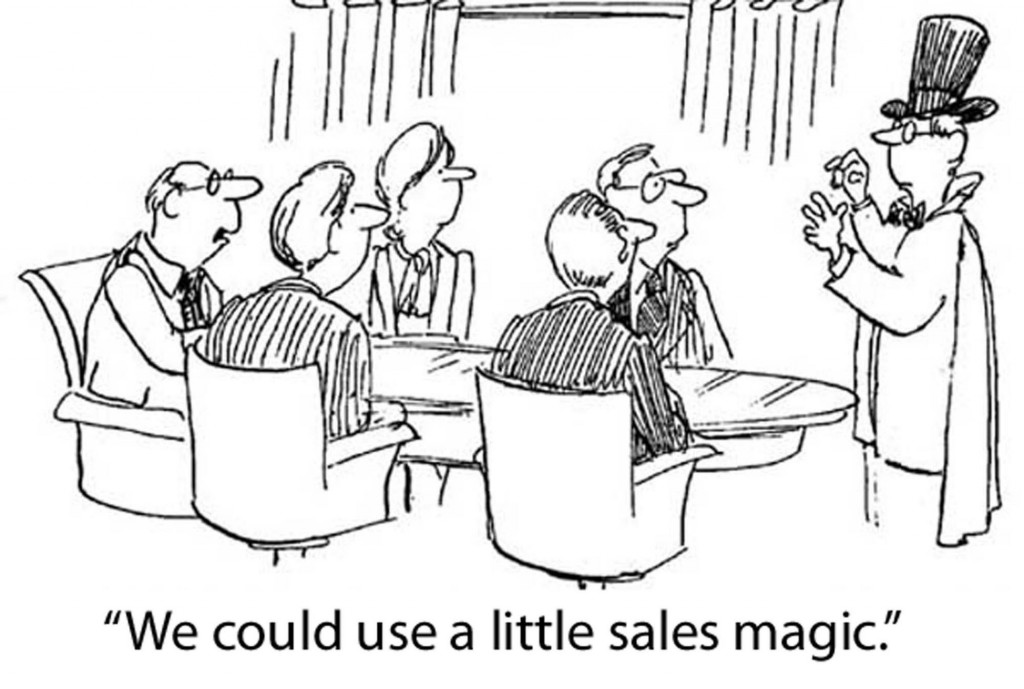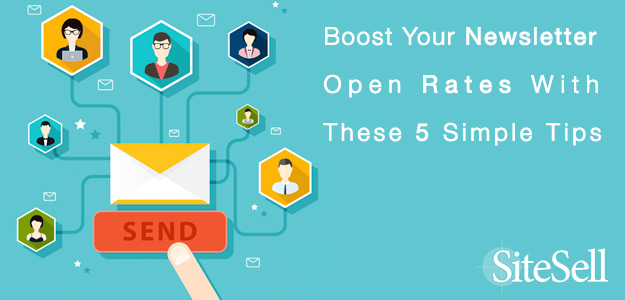Do you ever send out an email newsletter and get the impression you’re talking to yourself?
You know the feeling. You spend hours researching great information, finding the most attractive images. You put the whole thing together in a well worded document, targeted to your readers.
Feeling rather satisfied, you press ‘send’, sit back, and wait.
And wait. And …

Three days later, only 12% of your subscribers have opened your lovingly crafted emails. A pitiful 5% have clicked through to your website, and no one at all has bought a single product.
Why? After all, people must have been interested when they chose to sign up to your newsletter. You didn’t force them.
So what’s changed for your subscribers? And what can you change to get better results?
What’s Good, What’s Not?
So how do you know what’s a good open rate and a good rate of click-throughs to your site?
If you’re new to newsletter writing, you might aim for an open rate of around 90% – perhaps even more. That’s a great target – but you’re likely to be disappointed.
MailChimp’s research(1) shows that an open rate of between 13% and 28% is standard. A click-through rate (people who follow links from your newsletter) of around 2% to 5% is not unusual.
How can you tell what your percentage rates are? A reliable email provider like SBI!’s partners Aweber and MailChimp will measure this for you. Look for ‘reports > opens / clicks over time’ in Aweber. In Mailchimp, use ‘reports > view report > activity > opened / clicked’.
So why do people sign up for but not open – or even choose to unsubscribe from – newsletters?
Let’s look at this from your own perspective first.
Does Your Inbox Gladden Your Heart?
Take a few minutes now to think about your own inbox. Even if the newsletters you subscribe to are a different niche from yours, the mails you receive can tell you a lot.
How do you feel about the newsletters you have subscribed to? Which ones do you open? Why? Which remain ignored and unloved? When do you unsubscribe, and why?
Think about a newsletter you’ve really disliked. If you could give one piece of advice to the author, what would it be?
And importantly, which do you look forward to receiving? What is it about some newsletters that excites you? (And if none do, that’s important too.) If you met the author face-to-face, what words would you use to compliment her?
Taking a few minutes to consider your own thoughts and feelings can tell you a lot. Why not use our free downloadable tracking sheet to help you think this through?
What Do the Experts Say?
Now you have some idea about what you think makes a poor – and a great – newsletter, let’s take a look at the evidence from newsletter specialists. Maybe some of these will resonate with your own ‘findings’.
1. Be Clear About What Readers Can Expect
“What works is a value exchange – your valuable information for your prospect’s valued time..”
(Copyblogger, ‘Email Marketing’ (2))
Have you ever signed up for a newsletter thinking it was going to be one thing, when it turned out to be something completely different? Is that something you’ve identified on your checklist as a newsletter turn-off?
If it’s not happened to you, how would you feel if it had? I’m guessing you wouldn’t be too happy.
And neither would your own subscribers be.
So, before you even write your first newsletter, make sure your potential audience knows what to expect. Not being clear about what your newsletters will contain, or how often to expect them, won’t help retain readers. In fact, it’s more likely to make them reach for the ‘unsubscribe’ button.
It may feel good to have a list of hundreds of subscribers – thousands, even. But if they’re not sure what they’re signing up for, you’re likely to end up paying your newsletter provider for a lot of people who are never going to open your carefully crafted writing. It’s also highly unlikely they’ll ever buy anything from you.
Far better to have a smaller list of engaged readers.
How to achieve that? Here are some practical ideas:.
- Don’t just put a pretty sign-up box on your website and think that’s enough. It’s not.
- Instead, have a dedicated sign-up page which goes into detail about what readers can expect.
- Include this information:
- How often they can look forward to receiving your newsletter
- Why they should sign up – what benefits them about this newsletter?
- What will it contain which they won’t find anywhere else – including on your website?
- Make sure they know you’ll make it easy for them to unsubscribe. It may feel counter-intuitive, but it gives people a sense of security to know they won’t be tied into something forever!
- Make sure they know, too, that you will never sell or give away their details to anyone else. And make sure you never do!
2. Work Out How Often Subscribers Want to Hear From You
You’ll find some ‘gurus’ who suggest sending an email newsletter every day. Yes, that’s right. Every. Single. Day.
But guess the number one reason people give for unsubscribing from newsletters?
Yep. That’s right. A recent study(3) found that 45.8% of those who unsubscribe do so because they receive emails too often. More than any other issue with newsletters, they wanted to receive them less frequently.
It can be even worse than that. Not only do some readers unsubscribe, they mark those too-frequent emails as spam. And that’s the last thing you need.
So here’s a word of advice. Don’t do it!
How to find that “sweet spot”?
You want to make sure your readers don’t forget you, but you do not want to overwhelm them.
Go back to your own likes and dislikes. Think about your own inbox. How often do you like to receive newsletters? How often is too often?
Now think about your potential readers. How often might be the right number for them? Once a week? Once a month?
There’s no right answer here. Each niche is different. As a rule of thumb, less than once a month is not advised – readers have short memories and may even forget they ever signed up.
If you’re unsure, here’s some practical tips:
- Ask your subscribers!
- Use a free survey provider like Survey Monkey
- Include a poll in your newsletter – make it clear that the majority view will prevail!
- But – don’t commit to more than you know you can manage. Better to send newsletters regularly but less frequently, than promise more and not have time to keep your promise.
3. Make Your Subject Line Outstanding!
Grabbing the reader’s attention in an inbox crammed with emails isn’t easy. Your subject line will play a critical part in whether your newsletter is opened when dozens of others may be quickly relegated to trash.
In fact, there’s current research from one of SBI!s partner email providers(1) which places subject lines as the most important factor in ensuring good open rates.
Here are some practical tips:
- Make it personal by using the subscriber’s first name at the subject line’s start or end. Most email platforms, including both of SBI!’s partners (Aweber and MailChimp) can do this automatically.
- Keep it short. In a full inbox, readers will scan subject lines very quickly. MailChimp suggests no more than 50 characters.
- Make it relevant to the content. Don’t try to use a “smart” subject line to try to entice readers to click through. It may do – but they’ll quickly click away (and potentially unsubscribe or complain) when they discover the content isn’t related.
- Make it fun! Use a different subject line for each newsletter, and include words you know your subscribers will relate to. How to know? Forums are a great source of information. Take a look at some threads on a well-subscribed forum in your niche and take note of emotive words, in particular. Seeing them in a subject line means your subscriber will immediately identify with the message.
- Test, test, test. Some magazines ask for help in identifying subject lines by using Survey Monkey mailouts to discover which people like best. Or if, like MailChimp, your email provider has an A/B split test facility, use it to send one subject line to a segment of your list and another to a different segment. Which works best?
It’s important, too, to know that spam filters can stop your mails from ever arriving with your subscribers. To make sure this doesn’t happen to you:
- Never use all block letters in a subject line
- Don’t use several exclamation points – one is plenty
- Beware of words like ‘free’, ‘sale’, ‘% off’, ‘donate’, ‘perfect’, and ‘reminder’. They can trigger spam filters and, in any event, have all been found substantially to reduce open rates.
4. Don’t Pitch to a “Prospect” – Write to a Friend
You might have noticed the word “prospect” used by many ‘gurus’ in the marketing world. Here’s a piece of advice which doesn’t necessarily fit with theirs …
Don’t write a newsletter to a “prospect” – send an email to a friend.
Tweet This
Remember those snail-mail days of long ago? Maybe you’re too young to remember … In which case, just try to imagine. No mail for a week or two and then – a letter from a friend appears in your mailbox. Oh, the excitement! The warm and fuzzy feeling that letter brought!

Why?
Because you always looked forward to hearing all the latest news from someone you liked.
Your aim with each newsletter should be exactly the same. Create excitement when your subscriber sees it in her inbox – not dread because her heart sinks at the thought of yet another jargon-heavy sales pitch.
Always remember: you’re a solopreneur, not a mega-corporation. Your reader likes it that way – it’s one of the reasons she’s subscribed to you. It’s one of the characterful ways you stand out from the rest.
Your subscriber is an individual. Not a “prospect”. Not a robot. A thinking, feeling human being. She has a family. A life. She shares some of her life with you, but another part of it you don’t share.
She has problems, and she needs solutions to those problems. She has needs, which she’s looking to you to fulfil.
That’s another reason she’s subscribed.
She wants you to talk with, not at, her. She wants to share the latest news about the major thing you have in common – your niche.
She needs to know she can trust you, as you’d trust a real friend.
Yes, you want her to click over to your website and yes, you want her to buy from you. (Unless, of course, you’re sending out your newsletters only to get that warm, fuzzy, snail mail feeling.)
But she won’t do that if your newsletter is nothing but a glorified sales pitch. It’s as important that it has the same high quality content as any page on your website.
So, talk to your reader. Write in a way which really resonates with her.
Here are some practical pointers to help:.
- Write in a natural voice which you know will appeal.
- Bear in mind the word “newsletter”. You’re not writing an official report. You’re sending a letter about news in your niche.
- Beware of using jargon. If necessary, ask someone not familiar with your niche to proof-read. They’ll recognize it better than you.
- Read your content out loud when you’ve finished. It will help you work out what sounds right and what seems forced or unnatural.
- Finish with a phrase which sounds personal, and use an online signature maker to create a personalized signature.
5. Add a Little Magic
Of course, you want to sell via your newsletters. But have you ever opened a newsletter thinking “She’ll be doing another hard sell – yippee!”?
I thought not.
Just as you would never sell on every single page of your website (you wouldn’t, right?), you shouldn’t sell in every newsletter. The accepted average for a weekly newsletter is a sales pitch every four or five.
Instead, try to make your newsletter content value-added. You’re doing exactly what you should be doing on your website: pre-selling.
What’s pre-selling? SBIers will be well aware of this phrase – it’s one of the main teachings of the Action Guide!
Pre-selling is gaining the trust and confidence of your readers. Without that, they’re much less likely to be willing to buy from you.
How’s it done?
Add a little bit of magic to your newsletter. Something which enhances your subscribers’ lives.

Here are some practical possibilities:.
- As well as links from your newsletter leading back to your website, add information your site article doesn’t contain. An extra tidbit makes your subscribers feel they’re getting inside information that no-one else is privy to.
- Include a “Question of the Week / Month”. Answer questions asked regularly by your newsletter readers only. It’s possible to do this using video, providing a link to a specific page on your website to which only newsletter readers have the password(4).
- Give something away for free. It doesn’t really matter what – anything that helps make your readers’ life a little easier. For a foodie niche, it might be a PDF recipe that’s not on your site. For a travel site, a downloadable checklist of critical things to take on vacation. A free pattern for an embroidery site. Advanced knowledge of dates the free edition of your latest Kindle book will be available… You get the picture. People who occasionally get something for free are far more likely to open every newsletter – just in case.
- Got something to sell? Give newsletter readers first chance to buy from you – and make sure they know in advance that’s what’s happening. “Coming soon” may not be a good subject line, but added inside your newsletter it gives readers an incentive to open the next one.
- When you do sell, include a discount or voucher in your newsletter. 7 out of 10 consumers say they’ve used a coupon received in a marketing email. Everyone loves to feel they’re getting a bargain!
And Finally …
“Above all, create something you’re proud of”
Richard Branson
When you’ve written your newsletter, send a copy to yourself. This makes sure your layout looks good – make sure you test on a mobile device, too. A messy or hard-to-read layout is one of the reasons people give for unsubscribing from emails.
But more importantly, it allows you to ask yourself this all-important question:
“Would I open this email? And, if I did, would I spend more than a few seconds reading it?
Is the answer a resounding “Yes!”? Then – press that ‘send’ button!
Download a free checklist to help boost improve your newsletter open rate:
Resources and Further Reading
For further information about how to write excellent quality content for newsletters, take a look at this recent article.
- MailChimp: ‘Email Marketing Benchmarks’. The full version of these statistics can be found in Smart Insights: ‘Email Marketing Statistics 2015’.
- CopyBlogger: ‘Email Marketing – How to Push Send and Grow Your Business’
- Campaign Monitor: ‘The Surprising Data About How Often to Send Promotional Emails’
- Articles about how to add video to an email –
Aweber : ‘How Do I Add Video to My Message?’MailChimp: ‘Adding Video to a Campaign’
- Want to create your own personalized signature? Here’s an excellent online signature creator.
- Matthew Paterson: ‘All About Email Open Rates’
- MailChimp: More about Content Calendars
- Fortune Magazine: ‘Email marketing is alive and well – at least for now’
Cath Andrews
Latest posts by Cath Andrews (see all)
- Start a Passion-Based Business and Live Your Dream - February 1, 2023
- What Do You Say When Their Eyes Glaze Over? - December 20, 2021
- How to Monetize Your Email List in 5 Simple Steps - October 26, 2021


